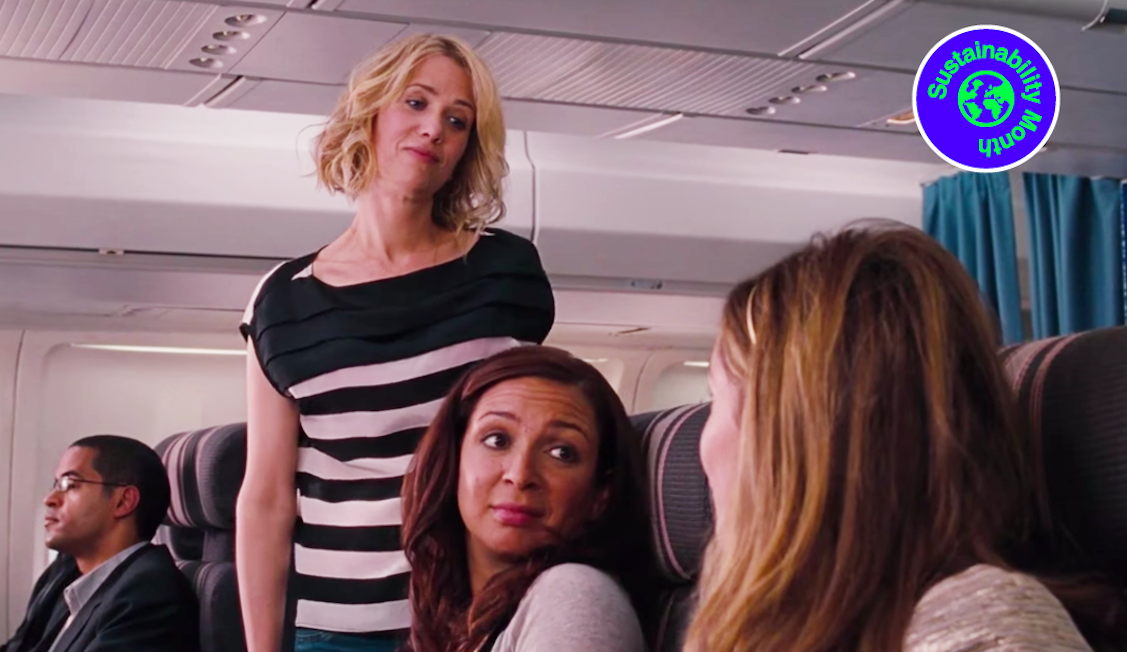
Before writing this yarn I probably knew the bare minimum about carbon offsetting my flights. On the passenger’s end, all you do is tick a donation box at the end of the online booking process. Then you get a message like this: “You will offset [x]kgs of carbon emissions from your trip with our certified and accredited carbon offset programs.” Sounds good, but I have no idea what it actually means. Or if making what is essentially an environmental donation will make a difference in the long run. So I did what what I do best: I pestered Qantas and a carbon solutions provider for the 411. Then I panicked about the planet.
FAST FACT: The global aviation industry generates around 2 per cent of all human-induced carbon dioxide (CO2) emissions, according to Air Transport Action Group. That’s not great, as CO2 traps heat to the Earth. We still need it, but too much makes the planet warmer. It’s why airlines like Air France have introduced projects and new regulations to combat the damage. As of this year, Air France is offsetting 100 per cent of CO2 emissions on all domestic flights across mainland France, which is over 450 flights and 57,000 customers per day, on average.
So what the heck is carbon offsetting?
At its very core, to carbon offset means to neutralise your emissions. For example, an average car can generate about four tonnes of carbon dioxide equivalents, like greenhouse gasses, in a year. So to offset that, you might purchase four tonnes of carbon offsets to neutralise the emissions you generated. You can do this by getting in touch with a carbon solutions provider like Carbon Neutral, based in Perth. Or, re: air travel, you can tick the box.
Where does your money go if you tick the box?
It depends on the airline, but your donation generally goes to carbon offset projects like reforestation, renewable energy, and habitat conservation. If you tick the box with Qantas, your money’s going to three major causes: The North Kimberley Fire Abatement Project, the April Salumei project, and conserving Tasmania’s wilderness. If you fly Virgin, your donation will go to greenhouse gas abatement projects in Australia, which are certified under the Australian Government’s National Carbon Offset Standard Carbon Neutral Program.
But if you prefer to choose where your money goes, you can try places like Carbon Neutral. The company currently works with over 400 businesses, ranging from small to big corporates, and local councils to manage their carbon footprint. Carbon Neutral’s huge on reforestation, particularly of abandoned farmlands that were cleared decades ago. Through its Plant-A-Tree program, Carbon Neutral says it has planted over 440,000 trees, restoring more than 300 hectares of cleared land.
Why trees?
“Trees through photosynthesis suck carbon dioxide out of the atmosphere,” Carbon Neutral CEO Ray Wilson says. “It’s a natural way of reducing emissions.”
The trees Carbon Neutral plant are also frequently maintained (I double checked), and Wilson assures me their land is legally protected so no one can swoop in and clear it all. It’s actually protected by a 100-year Carbon Right and Carbon Covenant, which is tied to the land title. Translation: Even if the land is sold, the landowner and subsequent landowners aren’t allowed to damage or remove the trees for 100 years. So that’s cool.
But look, I wouldn’t blame you for being cynical because as much as trees help, the amount of carbon dioxide flights are spitting out still outweighs the good.
How many people offset their Qantas flights?
So may it be cynicism, climate change denial, sheer confusion, or even mistrust of airlines, not a lot of Qantas passengers offset their flights. The airline says around 10 per cent of customers booking flights online tick the box. But 10 per cent is still something. And it still shows that people care.
Is it worth paying carbon offsets?
I mean, it’s still better than doing nothing.
“If you were to fly London to Melbourne via economy, that’s about 5 tonnes of emissions,” Wilson says. “That’s more than you probably emit in your car for a whole year. And whilst air travel is only 2 per cent of global emissions at the moment, it’s one sector that’s rising the fastest.”
“The way we’re heading it could be 25 per cent of total emissions by 2050,” Wilson adds. But as alarming as this is, he still has hope that things can change.
“Maybe it’s the Greta Thunberg effect,” he said, telling me that her homeland of Sweden has seen a 4 per cent drop in air travel in the last year. Per the BBC, more than 40 million people travelled through Sweden’s top 10 airports in 2019, compared with 42 million in 2018. But depending on who you talk to, the decrease in flights might be more of a combination of climate activism and say, aviation tax.
But in Australia, Wilson has definitely seen a surge in businesses who are keen on reducing their carbon footprint.
“Our client numbers have grown by 62 per cent,” he revealed, “and that’s happened in the last year.”
“We used to get five enquiries a week, now we’re getting eight to – some days – 25 business enquiries from all over Australia. It’s hard to keep up!”
Wilson has also spoken to his competitors, and they’re observing the same trend.
“There’s a real movement in terms of companies wanting to measure their footprint and reduce part of it, or even all of it. Some just offset their flights, some are doing everything – electricity, gas, and vehicle transport.”
“It’s the younger generation that’s really driving the movement,” Wilson said. “They understand the issues, and they want action.”







